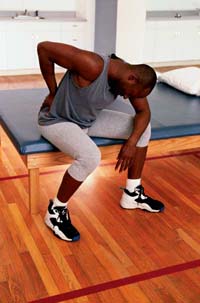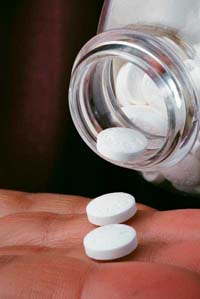
Publications International, Ltd.
Emergency back pain relief can get you on the road to recovery faster. Learn how to ice your back, compress the area, and when to see a doctor.
Maybe you lifted something heavy or swung a golf club a little too enthusiastically. Or maybe you've been hunched over a desk or computer for two weeks, battling a deadline. Whatever the reason, now your back is "out," and you're wishing for something, anything, that will put an end to the agony.
Take heart; you're not alone. Almost every American suffers from back pain at some point in his or her life. The bad news is that unless you have a major injury or disc problem, your doctor may not be able to do much for you other than prescribe some pain medication and advise you to rest. The good news is that by following some simple steps, you can be back in the swing of things in just a few days. Even better, you can help ensure that you won't have to endure similar discomfort in the future.
In this article, you will learn all about back pain and how to relieve it over the following sections:
- How the Spine Works
It would be impossible to discuss the back without mentioning its major architectural component -- the spine. Basically, the spine is group of bones, stacked on top of each other, along the length of your back. The spine is also your body's way of protecting your spinal column, one of the most important parts of the central nervous system. Most of the problems that occur in the spine involve the spaces between the bones, called disks. Some of the back problems that involve intervertebral disks include herniated disks, torn disks, and ruptured disks. We will teach you everything you need to know about your spine and how it can contribute to back pain.
- Back Muscles and Ligaments
The majority of back problems stem from muscles that have been exhausted or strained. Sore backs, aching backs, or simply back pain that won't let you get out of bed probably stems from muscular problems. In this section, we will inform you about ligaments, the connective tissue between the muscle and the bones of your spine. We will tell you how ligaments can be damaged and how proper posture can keep them healthy. We will also explain how the muscles in your back work, and hopefully show you can stop injuring them.
- Facet Joints and Nerves
The bones of the spine fit together in fairly intricate and fascinating way. The places where these bones rub against each other are called facet joints. Aside from helping to hold the spine together, facet joints also prevent the spine from bending in ways that might damage your internal organs. Unfortunately, like every part of the back, these joints can be damaged and cause pain. Speaking of pain, we will also talk about the nerves that run through the back, especially the spinal column. Finally, we will show you how all these various parts of your back fit together to make the mechanical wonder you take for granted every day.
Emergency Back Pain Relief
-
After you injure your back you probably want to crawl into bed or a hot bath and close your eyes. While this might feel good immediately, the care you give your back in the first few hours after an injury can significantly affect how much pain you feel in the next few days. We will give you advice for treating a back injury, such as resting your back, icing your back, and compressing the area. We will also let you know when your back injury is so serious that you should seek a doctor's advice.
- Chronic Back Pain Relief
Some people have chronic back problems, and live their life in fear of throwing their back at from the slightest activity. If you have a back that is constantly throbbing with pain or is stiff most of the day, there are steps you can take to relieve these symptoms. We will show you how to stretch your back to keep it loose and avoid injury. We will also tell you which activities to avoid and the benefits of a massage and good posture. You might also be surprised to learn that activity can keep your back healthy.
Learn More |
This information is solely for informational purposes. IT IS NOT INTENDED TO PROVIDE MEDICAL ADVICE. Neither the Editors of Consumer Guide (R), Publications International, Ltd., the author nor publisher take responsibility for any possible consequences from any treatment, procedure, exercise, dietary modification, action or application of medication which results from reading or following the information contained in this information. The publication of this information does not constitute the practice of medicine, and this information does not replace the advice of your physician or other health care provider. Before undertaking any course of treatment, the reader must seek the advice of their physician or other health care provider.
Advertisement







